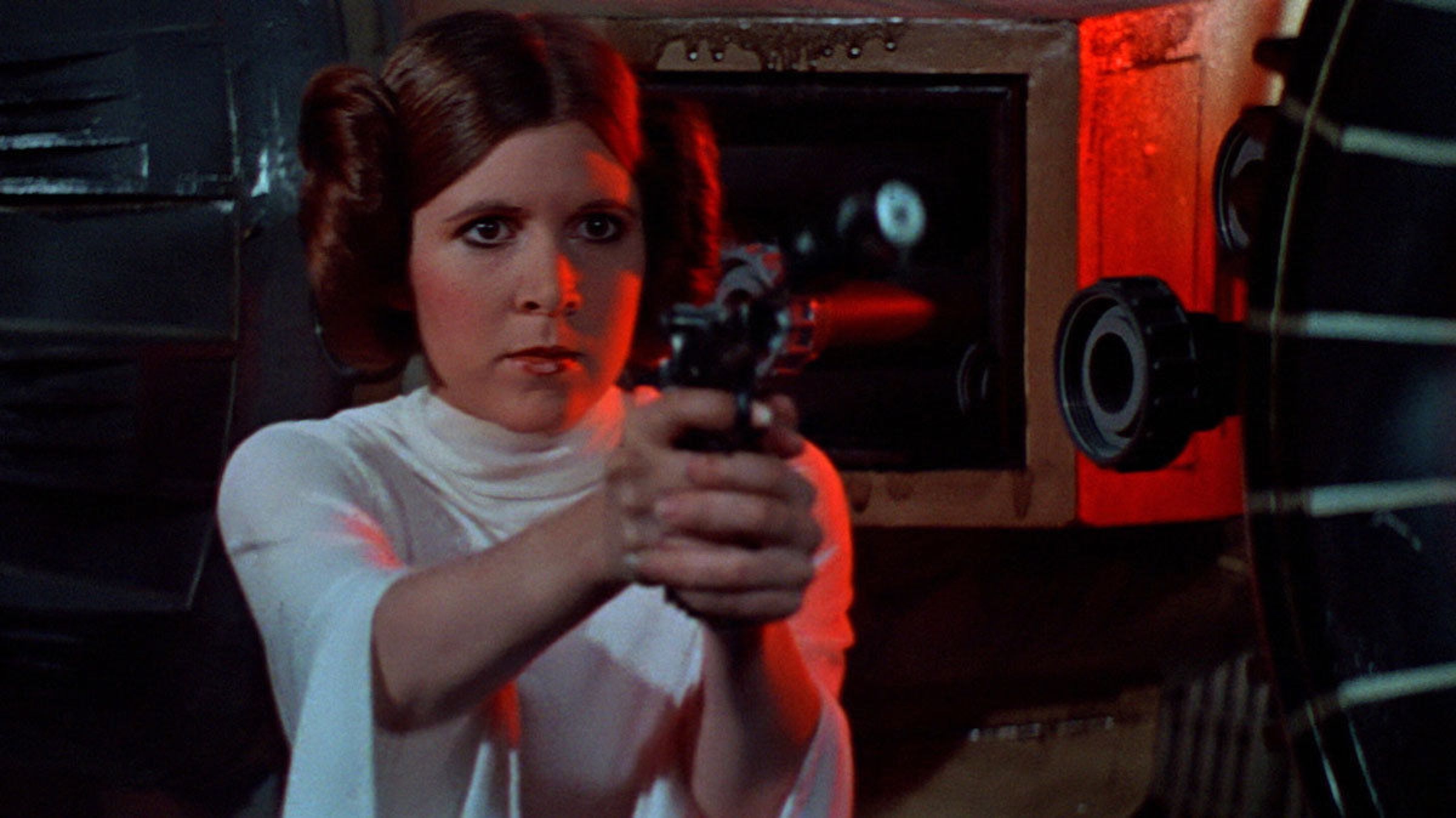Create a free profile to get unlimited access to exclusive videos, sweepstakes, and more!
From Jaws to The Old Guard: The evolution of the summer blockbuster

2020 has been a very weird year across the board thanks to the continuing scourge that is the COVID-19 pandemic. After months of lockdown and the normalcy of our everyday lives brought to a grinding halt, the world is trying to return to business as usual, often against the advice of medical experts. One notable example of this in the entertainment world is the growing attempt made by cinema chains to reopen for the masses in time to take advantage of what is left of summer. Thousands of theaters across the globe closed abruptly earlier this year after the spread of coronavirus became an unavoidable issue, and the cost to the film industry is reported to be several billion dollars.
As we face the very real risk that many of these cinemas may never reopen, the race is on to find ways to get people to go to the movies safely and spend their money on the films that were supposed to keep the big studios afloat, including the live-action remake of Disney's Mulan and Christopher Nolan's long-awaited Tenet. Even in the middle of a pandemic, Hollywood can't afford to let the summer blockbuster season disappear.
Hollywood is an industry notoriously allergic to change. They find something that works and they stick with it. For close to 40 years now, they have been beholden to the lucrative benefits of summer and the annual array of big-budget high-concept blockbusters they offer for audiences locally and worldwide. The logic behind it is pretty simple: The most profitable demographics—under-25s and families with kids aged 7 to 17—are all free from school over the summer and in need of flashy entertainment, preferably in a venue with air conditioning. A summer blockbuster is intended to be an Event, a thing you wait all year for that's hyped up to the nines. It's the reason you go to the movies.
The term "blockbuster" as it applies to film dates back to the 1940s. A blockbuster was a kind of aerial bomb used during the Second World War that gained its nickname because of the sheer force of its destructive power. Its first known use in reference to cinema came in 1943, when advertisements in various trade magazines described the war drama Bombardier as "the block-buster of all action-thrill-service shows!" Catchy. It evolved to define movies that were big on budget, spectacle, and scope, the sorts of stories that had to be seen on the biggest screen possible. As television became a dominant force in entertainment in the 1950s, studios poured more resources into these shiny new blockbusters, hoping that these lavish, extremely long, and obscenely costly epics would bring in audiences who would rather stay at home and watch Bonanza.
The blockbuster as we know it emerged in the 1970s when two dudes named George Lucas and Steven Spielberg—heard of them?—helped to radically change the game. The old studio system had come to an end the previous decade, and hot young new directors with greater creative freedom were making their mark on the art form. In 1975, Spielberg was a hotshot young director with one theatrical release under his belt and a couple of TV movies that had helped him to garner a reputation as one to watch. Jaws was only his second official movie, and, while the book it was based on had been popular, it wasn't an adaptation that anyone had high hopes for when it went into production. Then Lew Wasserman, then the chairman of Universal, attended a test screening, and he knew he had a mega-hit on his hands. He declared, "I want this picture to run all summer long." Jaws was given a wide release as well as an extensive marketing campaign that included plenty of TV spots that emphasized the thrills, the jump scares, and that now-iconic John Williams score. It was an unavoidable must-see event but one that had the critical clout to back up its hype (it received three Oscar nominations, including one for Best Picture). Jaws became the highest-grossing movie of 1975 and was the highest-grossing film ever at the time, a title it held onto for two years until George Lucas introduced us all to Star Wars.
Star Wars followed a similar pattern to success as Jaws: It wasn't as rapturously received by some critics—Pauline Kael infamously hated the movie—but it was still acclaimed enough to merit being seen as more than a mere sci-fi adventure title, akin to something Disney would make on the cheap. The marketing was highly effective, with Star Wars having a greater appeal to kids, and the film had a long initial theatrical run that kept it in viewers' focus for well over a year. You HAD to see it. This was less a mere movie than a burgeoning cultural phenomenon, one that remains a potent force in entertainment to this day. Once the box-office receipts poured in, other studios wanted to replicate the model being defined by Lucas and Spielberg: fast-paced, universally appealing spectacle, often with a genre twist, that would demand repeat viewings and inspire audience devotion.
The 1980s perfected the formula, with Lucas releasing more Star Wars movies and Spielberg making bank with creations like E.T. and Indiana Jones. Could it be spun into a franchise, like Beverly Hills Cop or Back to the Future? It was a blockbuster. Often a big name was involved, be it a director everyone knows, like Spielberg, an A-list actor like Eddie Murphy, or a familiar intellectual property. This, however, was not exclusively the case. Ridley Scott was a nobody when he made the wildly popular Alien. Tom Cruise was a 24-year-old with only a couple hits on his resume when Top Gun premiered. What these films had was a hook, something that inspired the masses and got people talking with fervor about them.
Things started to change in a big way in 1989, when Warner Bros. took a big leap and decided to adapt the decades-old comic book character Batman for the big screen and gave the job to an unknown former animator named Tim Burton. Batman was a recognizable property, but there was still no guarantee that audiences would be all that excited for a cinematic adaptation. Comics were seen as kids' stuff, and there hadn't been a major superhero movie hit since Superman, which had spluttered out after a number of underperforming sequels and audience fatigue. Batman sold a lot of tickets and even more merchandise, and so, of course, Hollywood scrambled to copy the new formula. Meanwhile, figures like Spielberg, Robert Zemeckis, and James Cameron kept on trucking and reaping the benefits with their new way of cinematic business. Spielberg alone continued to shape the genre in his image with movies like Jurassic Park. Heard of it?
Yet the summer season wasn't wholly overrun by Batman knock-offs or the sort of blockbusters we come to expect. You could still release a rom-com like Clueless or a star-led comedy like Liar Liar and have it bring in the big bucks. Check out the highest-grossing movies of the '90s by year and you'll see a lot of unexpected titles that would never crack the top ten in 2020. Star power still counted for something, so Julia Roberts and Harrison Ford could guarantee a hit bigger than, say, The Fifth Element. So what changed by the time we hit the 2000s?
The blockbuster formula by and large remained the same: big budgets, high-concept stories, lots of spectacle, and a hook for fans. What changed was that this model became more attuned to pre-existing intellectual properties, helping to birth major franchises. The Lord of the Rings trilogy became a far greater success than even the most generous industry expectations had anticipated. The record-breaking Harry Potter books became films of equal power. The Star Wars prequels defied bad reviews to keep audiences intrigued. Then, of course, in 2005, a new age of superhero madness was born thanks to Batman Begins. The blockbuster formula was refined, as they started to appeal to slightly older audiences befitting the PG-13 rating. You didn't even need a big star at the helm. The property was the star, more so than ever.
By the time Marvel rolled into town and changed the game once more, we saw a whole new spin given to the summer blockbuster. First of all, the summer part became much more flexible. Nowadays, we start having conversations about the season in April and end them well into September. Summer is now half of the year, and that doesn't even get into the holiday season, another place where blockbusters tend to do very well.
While the timeframe may have expanded, the sorts of blockbusters we get have become greatly restricted now that we're in the era of the Marvel Cinematic Universe. It's not enough to be a big-budget genre film now—you have to be part of an expanded franchise, part of an instantly familiar brand, and you have to appeal to audiences worldwide. Markets like China are more valuable than ever, and studios work hard to appeal to those countries. Once upon a time, the idea of spending $100 million on one movie was considered an obscene rarity; now, it's seen as relatively inexpensive for a blockbuster, especially since spending three times that amount on one title is the norm. What this also means is that these films have to make even more money than before. A billion-dollar gross is the expected low point. Justice League was considered a flop for grossing less than $700 million thanks to its exorbitant budget and the increased expectations of the genre as a whole.
When the stakes are that high, the risks studios are willing to take decrease, even though the model that started it all with Iron Man was considered pretty risky at the time. More money was poured into these blockbusters that audiences had little to no reason to care about, titles that seemed to exist solely to follow the Marvel path step by step. Remember that big Robin Hood movie with Taron Egerton that was supposed to launch a whole franchise? Or Guy Ritchie's King Arthur film? Mortal Engines? Valerian and the City of a Thousand Planets? John Carter? The Lone Ranger?
Plenty of movies have made lots of money and won over fans without the benefit of critical success, but you also can't force people to care about something they have little to no prior interest in. We may all know who Robin Hood is, but that instant familiarity with the concept doesn't mean we were all clamoring for a blockbuster version and five potential sequels. There was nothing about these movies that hooked in the tens of millions of paying customers needed just to break even, but studios continued to hope lightning would strike twice. It almost never does.
This risk-free approach also reinforces the most stubborn and limiting aspects of the industry. Executives have never been wild about investing in tentpole titles anyone other than cishet white dudes front and center, and even in the 21st century, that's still the assertion they work with. Marvel needed to make a solid decade of installments before letting a Black or female lead get their dues. The new Star Wars trilogy did put women and people of color up front on screen, but not behind the camera. Only a tiny handful of women directors have ever worked with a budget of $100 million or higher, even as such costs become the norm in the genre.
Studios are scared to deviate from the summer blockbuster model even as annual theatrical attendance numbers slip domestically and many of their current methods don't work in key international markets like China. The big threat they face comes from audiences' increasing preference for at-home entertainment, a problem they had to confront long before the pandemic forced us to stay at home with our Dark binge watches. Streaming services like Netflix may be breaking an old and increasingly archaic mold, but they're not ready to totally abandon old-school Hollywood tools. They're as invested in the blockbuster game as anyone else, even if they don't care so much about the rigidity of a release calendar.
Netflix movies like 6 Underground and The Old Guard, directed by Gina Prince-Bythewood, very much follow the expected standard of a blockbuster, but almost in a retro manner. The former may be directed by Michael Bay, but it's tough to imagine even the explosion king of Hollywood getting a major budget for an original action film, while the latter has superhero and comic book credentials but nothing on the level of recognition that Marvel's name brings. They're slightly cheaper affairs than their theatrical comrades but still feature big stars and, especially with The Old Guard, are designed to tap into that fandom frenzy that has people coming back for more, a feature that at-home streaming is built on. Perhaps a new age of the blockbuster can be given room to breathe via streaming and VOD, especially if Hollywood continues to double down on monstrous franchises that have become scarily too big to fail.
It remains to be seen how the film industry will, or whether it can, bounce back from the COVID lockdown. It's highly unlikely that Hollywood will be able to return to the status quo, and that applies to the blockbuster model. It's a sturdy business mold and it will endure, even as necessary changes are made, but they may end up being more radical than studios are willing to accept.


























